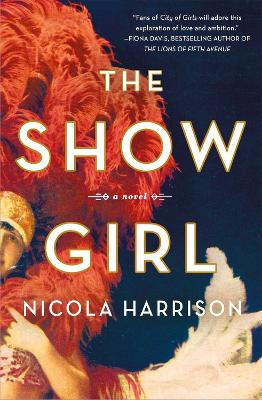The Show Girl captured my attention from page one. I had expected the author to jump right into Olive’s story as a Ziegfeld Girl. But, instead, it started with something painful to read. I know that what happened to Olive and the consequences were not uncommon for that era, but still. My heart broke for her.
I loved how the author gave a peek into what being a Ziegfeld Girl must have been like. Florenz Ziegfeld had insane requirements for his girls. They had to be a specific body shape, have particular hair color, certain shoe size, and keep a certain weight. Plus, they had to be somewhat talented. I know this; I would have never been a Ziegfeld Girl….lol.
Olive was a relatable character, which surprised me. For that era, she was headstrong and knew what she wanted. Olive wanted to be a performer with Ziegfeld Follies. But even when she was performing with Ziegfeld Follies, she still did things her way. Olive didn’t conform to Florenz’s standard of beauty. Instead, at one point, she became a flapper. She didn’t bow down to the overt sexism of that time. An example of that was her relationship with her father. He expected Olive to conform to what society dictated at the time and was enraged when she didn’t.
Olive’s relationship with Archie was the only thing I didn’t care for in the book. It started with him lying to her about his relationship status and then morphed from there. I didn’t doubt for a minute that Olive loved him, but I did have my doubts about Archie. Plus, Olive’s secret was always there, and it got worse when they got engaged.
The Show Girl takes place a couple of years before the stock market crash of 1929. The author did a fantastic job of showing how lavishly the well-to-do people lived. But the author also weaved in whispers of the impending crash—a line here, a paragraph there. Even though I knew it happened, it was still a shock for me to read. People lost everything in that crash.
The Show Girl also took place during the Prohibition Era. The author did a fantastic job of showcasing speakeasies, the horrors of bathtub gin (look it up, people died), and the raids the Federal agents did. There is one scene where a raid happens during one of the shows. Agents raided the show. They dumped out/smashed hundreds of bottles of wine/champagne and then left.
The last half of The Show Girl didn’t live up to the first half. But that was a good thing. The first half of the book had almost a frantic pace to it, with Olive’s lifestyle. The second half was a lot slower and more reflective. Olive had time to reflect on the things she did (and didn’t do). She also spiraled. That was well written, and I liked how the author brought Olive out of that spiral.
There was a big twist that took me by surprise. I was not expecting what was revealed. I didn’t blame Olive for reacting the way that she did. Because if I had found that out, I would have had the same reaction. But, I also liked how she overcame her shock and wanted to help.
The end of The Show Girl was almost fairytale-like. While I liked it, I didn’t believe it. Olive got everything she wanted and then got to walk away. It was almost too good to be true.
The Show Girl was a fast-paced, exciting look into what life was like in late 1920. The storyline was good, and the writing was fantastic.
I would recommend The Show Girl to anyone over the age of 21. There is one scene of rape, one scene of a traumatic birth, drinking, smoking, and some mild language.
